Science: Rocks
Igneous Rocks
Igneous rocks form when magma cools and crystalises either above or below the surface
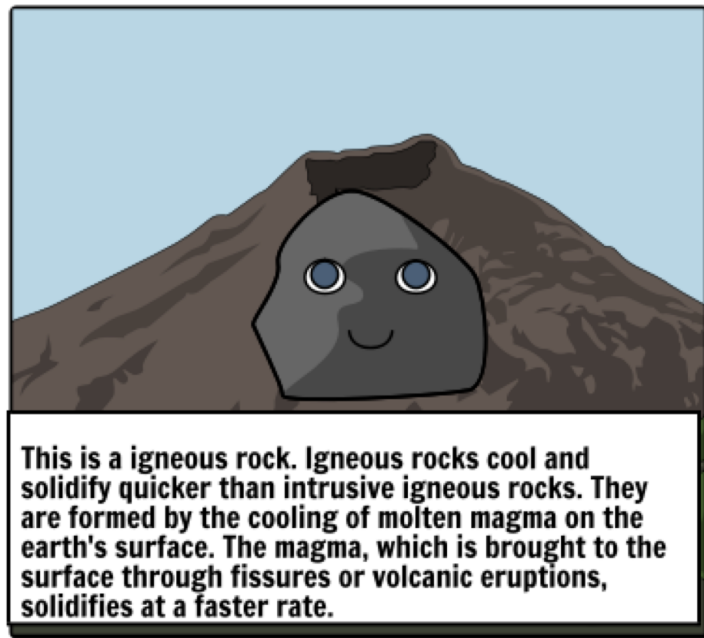
How do they form?
Igneous rocks form in 2 ways
Intrusive and Extrusive
Intrusive rocks are cooled below the earths surface, which is formed slowly. They are cooled in the crust of the earth with large crystals formed in them and they have a rough texture
Extrusive rocks are cooled above the earths surface which is formed fast. They are cooled on the surface with small to no crystals as the crystals dont have much time to form as it is cooled in seconds or minutes
Sedimentary Rocks
Sedimentary rocks are composed of sediments that have been cemented and compacted together.
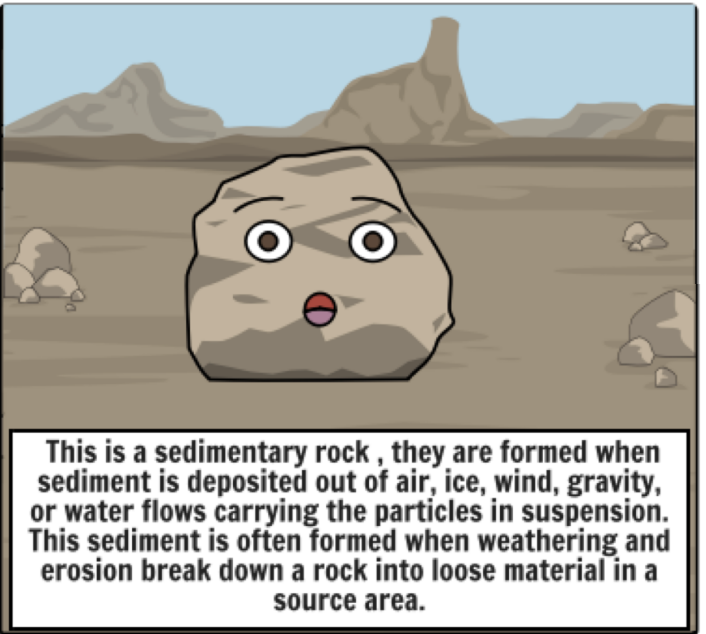
• Sediments can be:
• Mud
• Clay
• Sand
• Silt
• Gravel
• Bones
• Shells
• Dead organisms
• Plant matter
Form of sedimentary rocks
Weathering: broken into smaller rocks by physical
Erosion: Form sediment by particles getting carried away form thei source by wind and rain
Deposition: water and wind ‘stacks’ smaller particles together
Compaction: presses sediment together, builds up over millions of years
Cementaion: dissolved minerals crystallise and ‘glue’ particles of sediment together
Weathering
Mechanical weathering physically breaks up rock
Chemical weathering decomposes or decays rocks and minerals.
Erosion
Erosion happens when rocks and sediments are picked up and moved to another place by ice, water, wind or Gravity
Deposition
Water and wind slows and deposits the sediment to its place, after depositied, sediment is then compacted then cemented
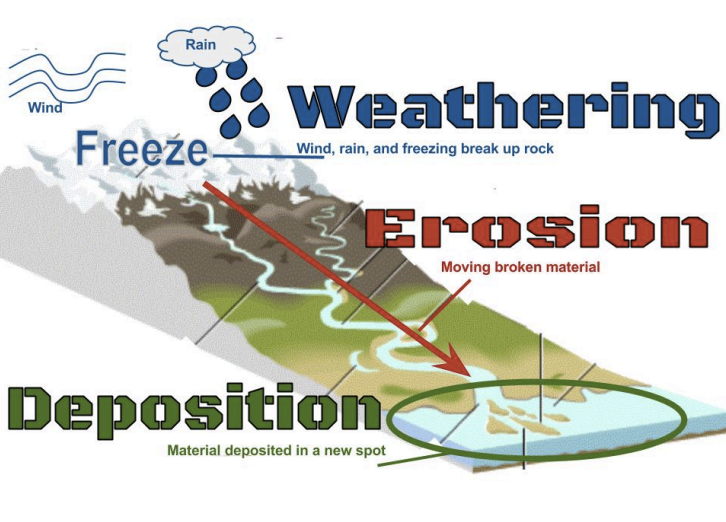
Compaction
Lots of pressure is built up over time on loose water filled pore spaces between particles and when the pressure is applied, compacted sediment (Sedimentary rock is formed)
(Basic: Sediments are pressed together)
Cementation
Loosely packed materials/ particles circular water throughout them them, cementation occurs and gradually the cementing materials fill much of the pore space and basically glues them together
(Basic: sediments are joined together by dissolved materials in the water)
The major characteristic to tell sedimentary rocks is its layers called Strata
Sedimentary rocks are often rich in fossils. Igneous and Metamorphic usually don’t
Why? Sedimentary rocks are much gentaler than the process cycle of igneous and metamorphic
Types of Sedimentary Rocks
Conglormerate, they have rounded gravel sandstone, They have sand sediment
Shale, They have clay or mud sediment
Limestone, They form from water organisms
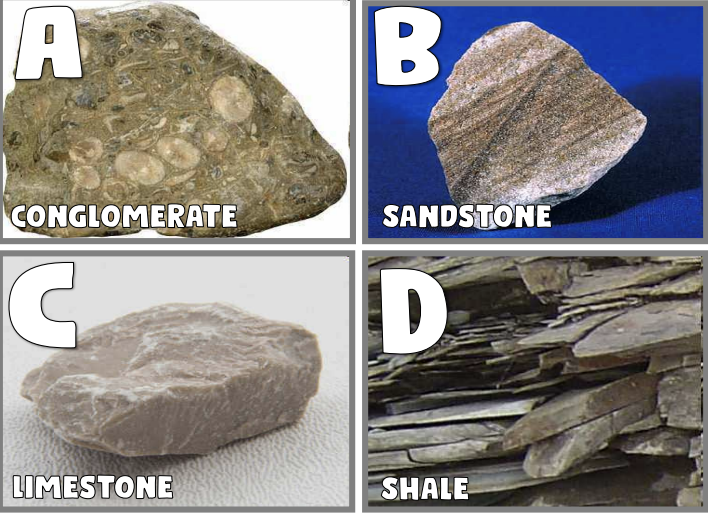
Examples of places with Sedimentary rocks
Pyramid of Giza is Limestone
White Cliffs of Dover is Limestone
Stone Henges are Limestone
The Pinnicles are Limestone
Metamorphic rocks
Large rocks that are changed by heat, pressure
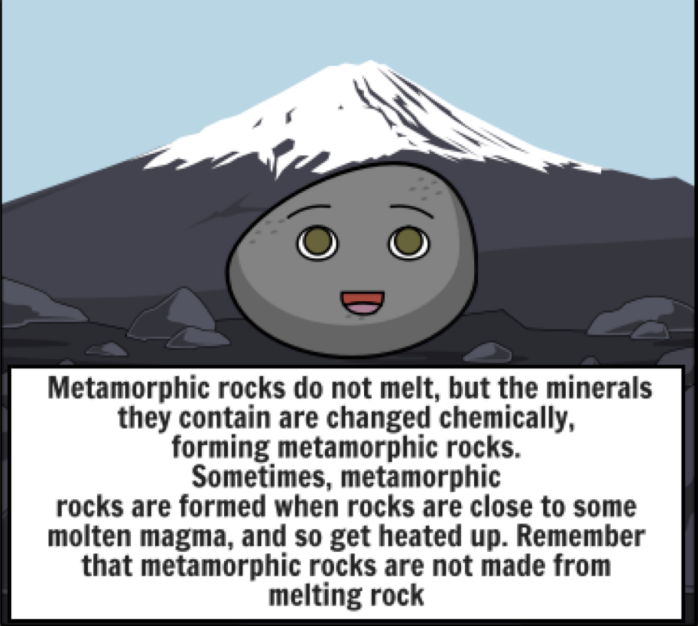
When the particle size of a rock during the metamorphic process is called Recrystalisation
An example can be the calcite crystals in limestone change into bigger crystals to make marble!
Metamorphic Rocks can change in 2 different ways
Mineral Changes: grow new minerals
Textural changes: Just recrystallisation
Metamorphic rocks are also put into 2 catagories
Foliated and Nonfoliated
Foliated have a layered banded appearance due to the formation of the minerals when its built. Form under High temperature and pressure
Nonfoliated lack the layered banded appearance of foliated types. Normally form under high temperature but low pressure
Examples of Metamorphic Rocks
Slate: parent rock is shale which is Sedimentary
Schist: parent rock is mica, shale or granite which is Igneous
Gneiss: their parent rock is Granite which is Igneous
Marble: their parent rock is Limestone which is Sedimentary
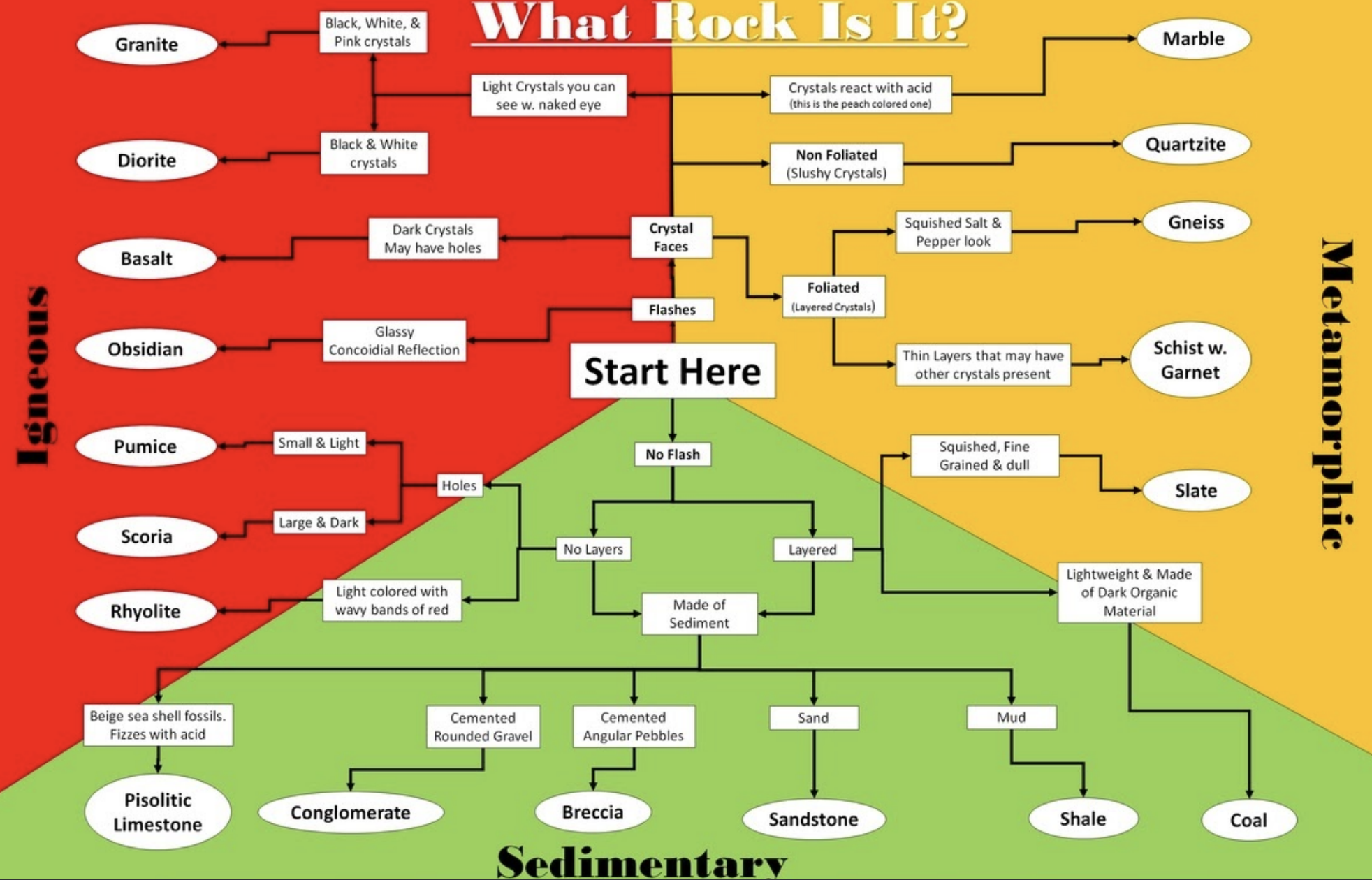
Minerals
Minerals are inorganic soil that has crystal structure and chemical deposition
Minerals Must have these 5 characteristics
Must be naturally formed
Must be inorganic (Basically cannot come from minerals that came from a living thing)
Must be a solid
Must have particles that line up in a repeating patten
Must have definite chemical composition
Identifying a mineral!
Colour is useful for identifying a mineral but different minerals can be the same colour
Streak is the colour of a minerals powder and is more reliable because streak colour doesn’t change. this can be done by scraping the mineral across a ‘unglazed porcelain plate’
Luster is the reflection of light off the minerals material
Density is the ratio of mass to its volume
Hardness is a test of if a mineral will scratch or be scratched using Mohs scale
Crystal system, minerals are assigned to one of the 7 crystal systems depending on their shape
Cleavage is similar in minerals. It's the way a mineral tends to break along specific lines or planes within its structure. These lines are often weaker than the rest of the mineral. (Basically the way a mineral breaks)

Rock Cycle
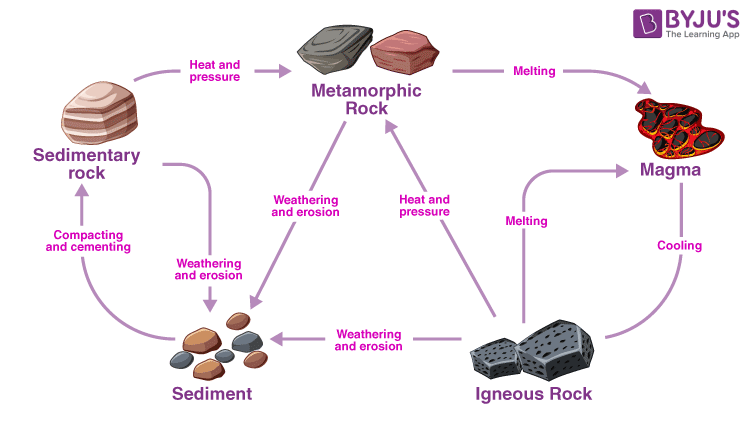
Indigenous Rock Use
use to construct tools
Use of Sandstone
they used it because it can retain toxic materials
questions
Igneous Rocks
What are the two main types of igneous rocks, and how do they differ in their formation?
Describe the texture of intrusive igneous rocks and give an example.
Describe the texture of extrusive igneous rocks and give an example.
What is the difference between magma and lava?
How does the cooling rate of magma affect the crystal size in igneous rocks?
Sedimentary Rocks
What are the five main processes involved in the formation of sedimentary rocks?
Explain the concept of weathering and its role in sedimentary rock formation.
What is the difference between mechanical weathering and chemical weathering?
How does erosion contribute to the formation of sedimentary rocks?
Describe the processes of deposition, compaction, and cementation in sedimentary rock formation.
Metamorphic Rocks
What are the main factors that cause metamorphism in rocks?
What is the difference between foliated and non-foliated metamorphic rocks?
How does the degree of metamorphism affect the texture and mineral composition of a rock?
Name a metamorphic rock that is formed from shale.
Name a metamorphic rock that is formed from limestone.
Rock Cycle
What is the rock cycle?
How are the three types of rocks (igneous, sedimentary, and metamorphic) interconnected in the rock cycle?
Describe the process of erosion and deposition in the rock cycle.
Explain the role of heat and pressure in the rock cycle.
How does the rock cycle contribute to the formation of Earth's crust?